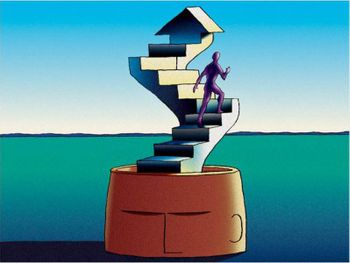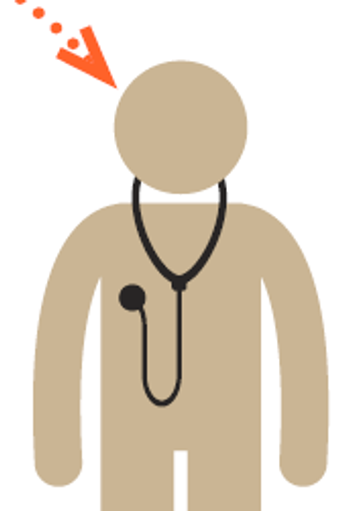
I begin by remembering my hours as a patient and Freud’s “Fundamental Rule”: Say Whatever Comes to Mind...

I begin by remembering my hours as a patient and Freud’s “Fundamental Rule”: Say Whatever Comes to Mind...

Clinicians will be drawn in by author Charles R. Cross's personal experience documenting, Here We Are Now: The Lasting Impact of Kurt Cobain. Cobain, lead singer of Nirvana, committed suicide 20 years ago this month.

Take-home messages on the immunology of schizophrenia and NMDA receptor encephalitis from the Schizophrenia International Research Society conference here.

In the trenches of Alzheimer research, the battle continues . . . but where do we stand? Is the war on AD dementia nearing conclusion, or are we simply in the initial throes of the fight? Three experts weigh in.

How the Repressed-Recovered Memory–Multiple Personality Disorder iatrogenic epidemic-surely one of the most tragic chapters in the history of psychiatry, psychology, and psychotherapy-ended, and how psychotherapy patients came to be protected by informed consent.

A discussion of computerized cognitive training programs with the most independent supportive research that demonstrates a previously unrecognized degree of neuroplasticity, or cognitive flexibility, in the brain.

This video features a particularly poignant section of a Q&A between National Council for Behavioral Health President and CEO Linda Rosenberg and NatCon 2014 Keynote Speaker Hillary Rodham Clinton, on suicide.

What's your first impression of this Rorschach-type image? Is there a place for Rorschach measures in assessing psychotic functioning?

The topics in this Special Report provide a broad picture of the issues psychiatrists face as they take a clear-eyed look at the opportunities and challenges in the emerging health care system.

Although most major organizations recognize the importance of collaboration, the challenge for psychiatry is how to best integrate different aspects of psychiatric and primary care. Help here.

Psychiatrists are particularly susceptible to burnout because of the nature of their work and the populations they serve. Combat strategies here.

This article reviews the many forms of fee agreement and notes the important factors to consider as well as questions to ask to properly assess and vet what may be best for one’s practice.

Everything you need to know about the MOC process.

We talk about mental disorders as brain disorders, but what does that really mean? How does it change the way we think about autism, schizophrenia, depression, bipolar, and other illnesses? The answer to these questions are still evolving. More in this video exclusive with NIMH Director Thomas Insel, MD.

Vice President of the United States Joe Biden spoke at this year's American Psychiatric Association Annual Meeting in New York. Here, a video clip from his speech.

We do not have to set time aside to do something that helps validate our experience, while simultaneously coping with it. The lesson expressed in this psychiatry resident's poem.

Psychiatrists may find themselves embroiled in matters that extend beyond the routine doctor-patient relationship unless they are clear about the differences between their treatment and forensic roles.

Select natural products have been evaluated as adjunctive agents that may be combined with conventional antipsychotics, with promising preliminary findings. Music therapy, meditation, and mindfulness training may improve quality of life for individuals with schizophrenia. Details here.

I get a strong and encouraging response whenever I write or talk about saving normals from excessive treatment. I get almost no response when I write or talk about the shameful and wasteful neglect of the severely ill. We mistreat them barbarously and almost no one seems to care.

What expanded roles should psychiatrists be playing in the provision of proper pain management without taking their eyes off the issue of prescription opioid misuse and abuse? Insights here.

What factors are involved in parents’ decision to begin medication treatment for a child with ADHD? An overview of studies that provide clinically relevant information related to the course and treatment outcomes of ADHD in children and adolescents.

Malaysia Airlines flight 370 has become our Leviathan, its passengers Leviathan’s children. In accepting our inability to draw them out of whatever deep place they may lie, lies the best hope of healing, a necessarily ambiguous closure.

The authors review the clinical use of ketamine as the anesthetic induction agent in ECT and discuss the evidence that it augments antidepressant response and reduces cognitive adverse effects.

Alcohol misuse in older adults is often underdiagnosed in medical practice. This age group is rapidly moving into the treatment realm of the practicing general, geriatric, and addiction psychiatrist.

The study of moral cognition now carries age-old questions and observations into the era of neuroimaging and cognitive neuroscience by the shift toward a capacity for asking, “What are the structures necessary and sufficient for moral reasoning?”

Sometimes when you complain for long enough about the disastrous nature of something, you end up being nominated to fix it.

Research is now making progress in understanding what happens before and during the illness and how this behavior can be explained.

Evidence has accumulated on the efficacy of transcranial direct current stimulation in major depression. The authors review its potential mechanism of action, findings from recent clinical trials, and potential role in the treatment of depressive disorders.

How are individuals with anorexia nervosa able to ignore signals regarding hunger that otherwise motivate eating, even when they are severely emaciated? Expert insights and online coverage by Psychiatric Times during National Eating Disorders Awareness Week.

The removal of the so-called “bereavement exclusion” (BE) from DSM-5 was one of the most difficult and controversial decisions the DSM-5 work groups made, and many clinicians continue to find the distinction between ordinary grief and major depression confusing.